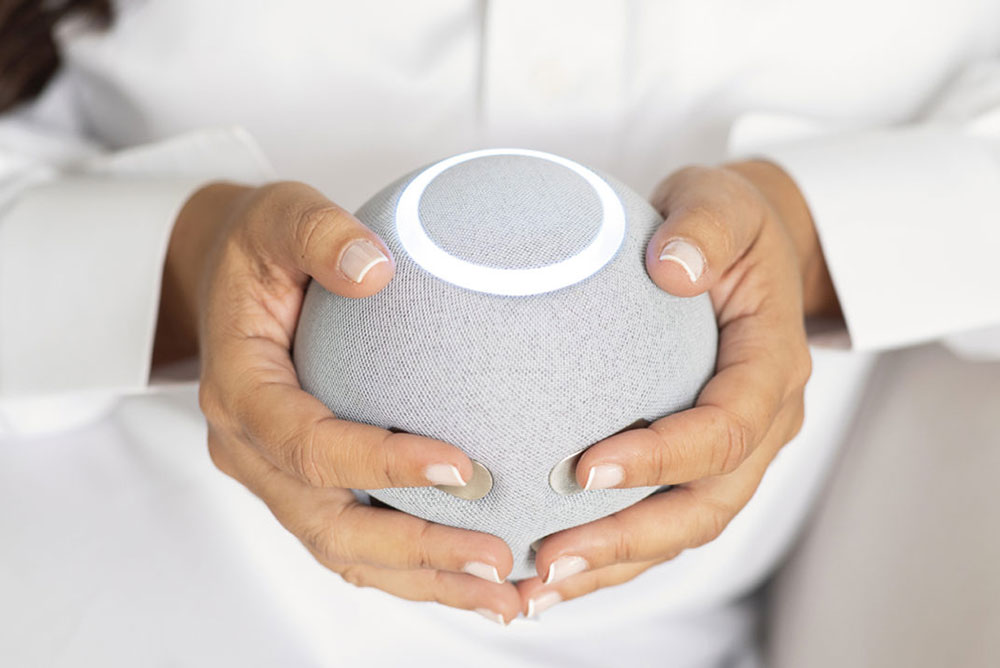
Reflect.com
By Mary Carpenter
In our MyLittleBird Well-Being series “Answers to Readers’ Questions,” Mary responds to a reader comment on the post, “Stay Parasympathetic:”
“This is a great reminder to meditate and exercise… it’s fun and even good for us. The trouble is setting aside the time to do these enjoyable things and not just fuss over the ‘to do’ list.”
MLB: You are right, both that regular meditation practice is the best route to lasting changes in various stress-related physiologic functions, and that it requires a lot of motivation and even then can be a struggle to find the time—with the result of upping stress levels rather than lowering them. While a recent slew of app-based devices as well the Apple watch can help, interacting with electronics can bring its own stress—and still requires motivation.
What can boost motivation is biofeedback — along with the improvements achieved by “learning to voluntarily control certain body functions such as heartbeat, blood pressure, and muscle tension with the help of a special machine,” according to the National Cancer Institute. Regular sessions of biofeedback training —not treatment, experts emphasize — lasting from five minutes to an hour, can lead to improvement in bodily dysfunctions that occur in joints such as the jaw and the liver’s production of bile, as well as chronic and acute pain.
Choosing personal goals can also help. While hypertension was originally both an aim and measurement of stress reduction, another possibility is breathing— to improve both volume, increasing the amount of oxygen taken in; and pace, to slow and deepen the breath in order to engage the calming parasympathetic nervous system. While many devices “simply pace a distinctive breathing pattern, biofeedback improved breathing behavior,” according to researchers in Kaiserslautern, Germany.
Many devices offering breath biofeedback require strapping cumbersome “respiratory sensory belts” around the abdomen. But for newer apps like Belly-Bio Interactive Breathing and Alphabeats, a mobile phone on the abdomen enables the phone’s “built-in accelerometers to capture the abdominal breathing movements,” explain the German researchers — though they note that placing and maintaining the correct position of the phone is tricky, and “immediate effects on the user’s relaxation state should, however, not be expected.”
Now a soft, grapefruit-sized ball called the Orb (from the Israeli company Reflect) sits in the hands and requires no interaction with apps or additional electronic devices. Instead, the Orb’s soft light changes color to give biofeedback on two variables related to stress—skin conductance response (also called electrodermal response) as a measure of physiologic arousal; and, the latest gold standard in health assessment, heart rate variability (HRV), which is linked to breath.
Heart rate variability is the variation in time intervals between heart beats, explains Brigham Young University psychologist Patrick Steffen. Greater fluctuations in heart rhythm mean longer intervals between heart beats—which allow for more flexibility responding to changing physiological needs that range, for example, from sleep to strenuous exercise.
Lower HRV, by contrast, indicates less flexibility and responsiveness —and “predicts mortality and morbidity and also occurs in depression, anxiety and chronic stress,” writes Steffen. A key part of HRV—also hypothesized to be a pathway through which biofeedback improves HRV— is breathing at resonance frequency (RF), approximately six breaths per minute, with slight differences for each individual.
Research subjects who breathed at their own RF (measured beforehand for each individual) for 15 minutes reported higher positive mood, along with showing a higher HRV ratio, Steffen said – also noting that about six breaths per minute was the pace at which “heart rate and breathing synchronize or become resonant.” And better scores on RF breathing linked to the HRV ratio were a good “measure of parasympathetic activity.”
For more than 30 years, HRV biofeedback has helped patients with disorders including asthma and depression—and others with performance enhancement. Earlier gadgets involving “wearables” used with apps included the EmWave2, with a sensor worn on the ear lobe that records heart rate to encourage smooth HRV; and the Muse 2 that relies on an electroencephalography (EEG) headset to measure brainwaves, which helps users “meditate less but better.”
Most devices come with a high price tag. Of the early wearables, the EmWave2 costs $229, and the Muse 2, $249.99. The Orb costs $229—with a discount for early adaptors.
“Taking control of your breathing, you can gain indirect control over your heart rate,” writes Kyle Pearce on diygenius. But while Pearce points out that devices “can offer us a more accurate recording and a more comprehensive analysis,” the body can be its own feedback machine.
Among those who prefer taking cues from the body, Richard Davidson, founder of the Center for Healthy Minds at the University of Wisconsin-Madison and a “dedicated meditator,” criticizes the Muse’s EEG feedback, noting that “meditation” in Sanskrit means “familiarization,” and believing that only increasing familiarity with the nature of one’s own mind can lead to more effective meditation.
Because my focus is breath, I found a body-alone biofeedback exercise that involves putting one hand on the chest and the other on the abdomen, then breathing in slowly and deeply through the nose until I feel the abdomen expand, followed by expansion of the chest and then holding the breath for three seconds, and exhaling through pursed lips to make a relaxing, whooshing sound. But as commitment and time remain challenging for me, getting help from the Orb’s soft lights becomes very appealing.
—Mary Carpenter regularly reports on topical issues in health and medicine.
